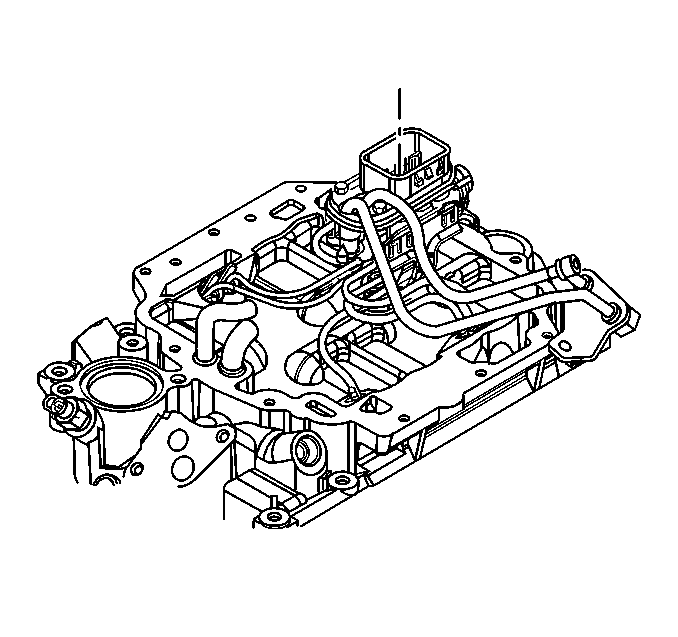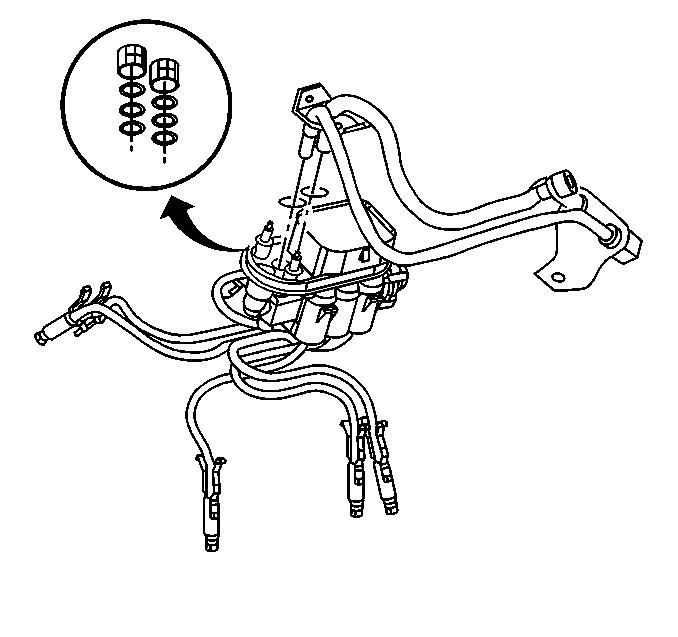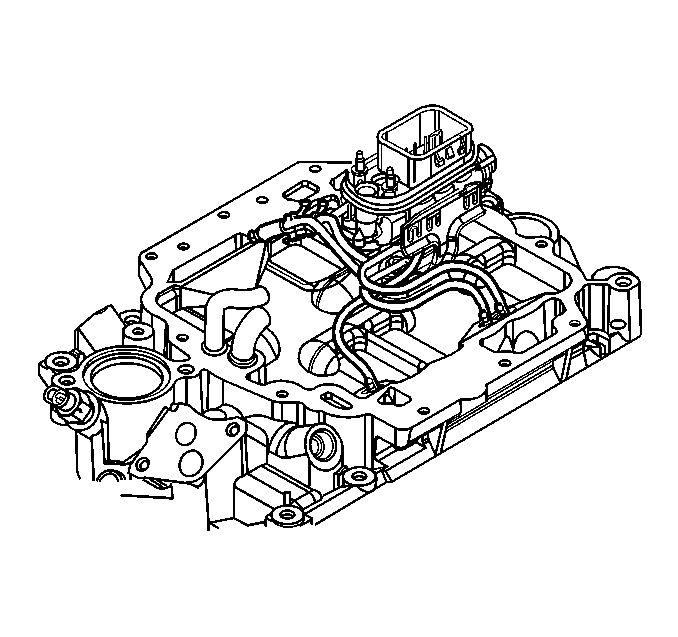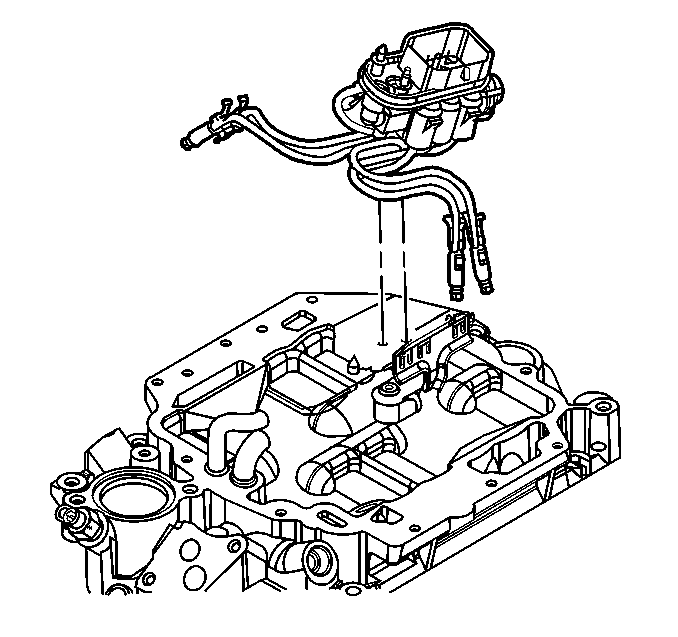Cleaning and Inspection
Removing the fuel meter body assembly from the engine requires removing the top portion of the intake manifold, called the upper manifold assembly and throttle body.
An 8 digit part identification number is on a mylar label affixed to one of the fuel meter body assemblies. Refer to this number if servicing or part replacement is required.
Notice: Do not use a cleaner which contains methyl ethyl ketone. This extremely strong solvent may damage components and is not necessary for this type of cleaning.
Use a carburetor cleaner in order to remove deposits. Refer to the instructions provided with the cleaner.Notice: Cover the injector sockets in order to prevent dirt and other contaminants from entering the open fuel passages.
| • | Before removal, the fuel meter body assembly may be cleaned with a spray type engine cleaner, GM X-30A or the equivalent. |
| • | Follow the package instructions. |
| • | Do not soak fuel meter body assemblies in liquid cleaning solvent. |
Removal Procedure
- Disconnect the negative battery cable.
- Relieve the fuel system pressure. Refer to Fuel Pressure Relief Procedure .
- Remove the electrical connector to the fuel meter body.
- Remove the fuel feed and return hoses from engine fuel pipes.
- Remove the upper manifold assembly. Refer to Engine Mechanical.
- Squeeze the poppet nozzle locking tabs together while lifting the nozzle out of the casting socket.
- Remove the fuel meter body from the bracket by releasing the lock tabs on the bracket.



Important: When disconnecting the poppet nozzles, remember the sequence in order to ensure correct poppet nozzle placement to each cylinder.

Installation Procedure
- Install the fuel meter body assembly in the intake manifold.
- Push the fuel meter body into the bracket.
- Push the poppet nozzles into the casting sockets.
- Inspect the poppet nozzles in order to ensure they are firmly seated and locked in the casting sockets.
- Connect the upper manifold electrical connector.
- Install the new O-ring seal on the engine fuel feed and the return pipes.
- Install the fuel feed and the return hoses to the engine fuel pipes.
- Inspect for fuel leaks.
- Disconnect the negative battery cable.
- Disconnect the fuel pipes.
- Install the upper manifold assembly. Refer to Engine Mechanical.
- Tighten the fuel filler cap.
- Connect the fuel Pipes.
- Connect the negative battery cable.
Notice: Use the correct fastener in the correct location. Replacement fasteners must be the correct part number for that application. Fasteners requiring replacement or fasteners requiring the use of thread locking compound or sealant are identified in the service procedure. Do not use paints, lubricants, or corrosion inhibitors on fasteners or fastener joint surfaces unless specified. These coatings affect fastener torque and joint clamping force and may damage the fastener. Use the correct tightening sequence and specifications when installing fasteners in order to avoid damage to parts and systems.

Tighten
Tighten the fuel meter body attaching bolts to 10.0 N·m
(88 lb in).
Caution: Verify that the poppet nozzles are firmly seated and locked in their casting sockets in order to reduce the risk of fire and personal injury. An unlocked poppet nozzle could work loose from its socket and produce a fuel leak.
Make sure all of the tabs are locked into place.

Important: The fuel meter body assemblies are numbered to indicate poppet nozzle order.


Tighten
Tighten the fuel pipe nuts to 30.0 N·m (22 lb ft).
| 8.1. | Turn ON the ignition switch for 2 seconds. |
| 8.2. | Turn the ignition switch to the OFF position for 10 seconds. |
| 8.3. | Turn the ignition switch back to the ON position. |
| 8.4. | Check for fuel leaks. |
Caution: Unless directed otherwise, the ignition and start switch must be in the OFF or LOCK position, and all electrical loads must be OFF before servicing any electrical component. Disconnect the negative battery cable to prevent an electrical spark should a tool or equipment come in contact with an exposed electrical terminal. Failure to follow these precautions may result in personal injury and/or damage to the vehicle or its components.
